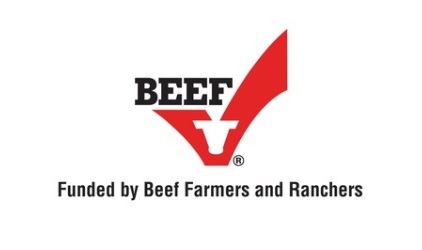
Over the years, the venerable beef checkoff logo that appears on anything funded by checkoff dollars has had several different taglines. One of the more common is “Funded by the Beef Checkoff,” according to the Oklahoma Farm Report.
The problem is that consumers don’t know what the beef checkoff is. So recent research led to a tagline update. It now reads, “Funded by Beef Farmers and Ranchers.”
The advantage to the change is that learning that cattle producers pay into a self-help fund resonates with consumers. They like the fact that beef producers are making their own investments into promoting their product and industry, says NCBA’s Alisa Harrison.
Click here to read and hear more about the change to the beef checkoff logo.

“I recall reading an article that stated the poultry industry used about 90% of the technology available to it, dairy and swine production about 70%, cattle feeding about 50%t and cow-calf production about 10%,” says Joe Paschal, Texas AgriLife Extension beef specialist in Corpus Christi.
Writing for the Victoria (Texas) Advocate, Paschal says, “I realize that there is a lot of technology out there for cow-calf producers to consider adopting and some of it can be pretty expensive initially or have a pretty steep learning curve (or both).
If you have mastered the internet and your cellphone, I don’t expect that there is too much technology that the average beef producer can’t master and determine if it is profitable.”
Click or tap here to read more.

From scours to pinkeye, overeating disease to pasturella, cattle producers are faced with a lot of options regarding preventative medicine for their cattle.
When it comes to prenatal vaccines and vaccines for very young calves, it’s important to make sure the resources are being spent where they will be most effective, reports Tri-State Livestock News.
That starts with evaluating your herd health, said Dr. Dale Grotelueschen, director and professor at Great Plains Veterinary Educational Center, part of the University of Nebraska-Lincoln. “There’s not one best vaccination protocol for everyone, for every herd,” he said. “I think every vaccination protocol needs to be tailored to the needs of the system and the health risks that are most prevalent in the system the cattle are being raised in.”

According to Glenn Selk, Oklahoma State University emeritus animal scientist, research at the University of Nebraska concluded that cold temperatures can influence calf birth weight. While weather cannot be controlled, this study can teach us that if we have below average winter temperatures, larger birth weight calves and more calving difficulty can potentially be expected in the spring, according to the Oklahoma Farm Report.
Click or tap here to learn more about this phenomenon.
Dentition, or the condition and wear of the cow’s teeth, can be a useful tool to determine if the cow should stay in the herd for another year, reports onpasture.com.
The age of younger cows can be closely estimated by the number of permanent incisors present on the lower front jaw. The difficulty in aging a cow comes when looking at middle aged (6- to 10-year-old) cows. Rather than the number of permanent incisors that have erupted, tooth wear and degree of separation between teeth is the indicator of age in older cows.
Click here to read and watch more information on how to age a cow by dentition.




Leave A Comment